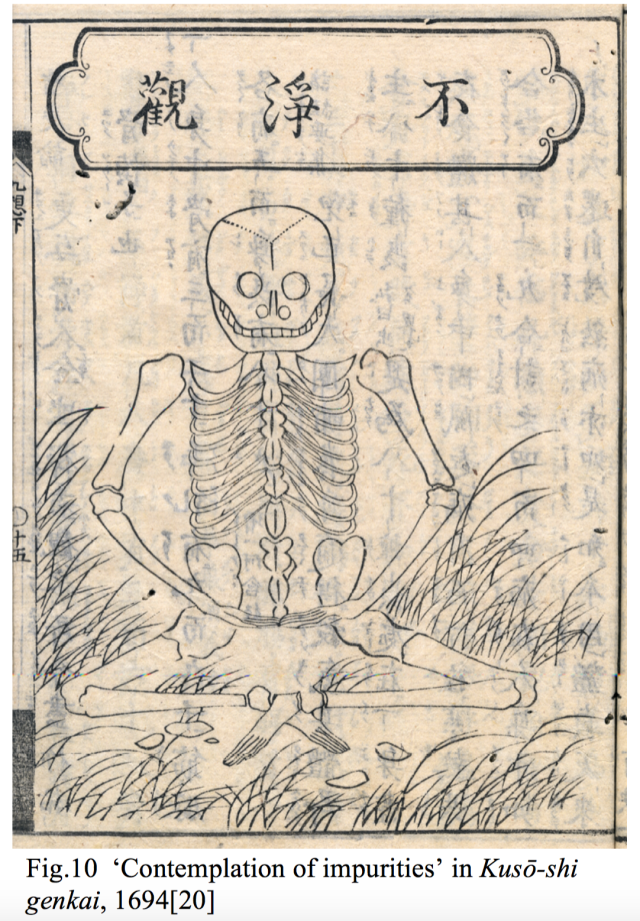
From “The True Shape of Human Bones — On the Dawn of Anatomical Dissections in Early Modern Japan” By Michel Wolfgang. p 42
Warning! Very graphic imagery ahead if you choose to click through to this article.
I had the hypothesis that the type of “body horror” imagery which we see in modern Japanese horror Manga had some kind of historical relationship with Japanese Buddhism, probably via Buddhist meditative practices focused on repulsion. After some study, I am convinced of this hypothesis.
The imagery I saw in these manga reminded me of certain anatomical sketches and grotesque Japanese paintings from the Buddhist tradition. But what really put the idea in my head that there might be a connection between the contemplative practices of Buddhism and these manga was the disturbing experience of actually reading them. Although I’m not a Buddhist or well versed in how these particular meditative practices are supposed to be carried out formally, the straightforward descriptions of these meditations seems at least superficially similar to the experience of viewing grotesque images on paper.
Lets me show you what I mean:
Quotations from the Sutras:
The following is from Ekottarikāgama 12.1, which seems to be a Chinese recension of earlier texts:
““In this case, the practitioner meditates on the body as a body and according to its functions. When he examines it from head to toes or from toes to head, he sees that it is composed of impure constituents, and he is unable to be attached to it. He observes that this body has hair of the head and hair of the body, nails, teeth, skin, flesh, sinews, bones, marrow, sweat, pus, stomach, small intestine, large intestine, heart, liver, spleen, kidneys. He observes and recognizes urine, excrement, tears, saliva, blood vessels, grease, and observing and knowing them all, he is unattached and regrets nothing. This is the way the practitioner observes the body in order to realize peace and joy and be able to end unwholesome thoughts and remove anxiety and sorrow.”
It even explicitly uses a butcher analogy:
“Just like a skillful butcher or his apprentice might lay out the different parts of a slaughtered cow and distinguish the leg, heart, torso, and head, the practitioner observing his own body distinguishes the Four Elements just as clearly, seeing that this is earth, this is fire, and this is air. Thus the practitioner meditates on the body in the body in order to end attachment.”